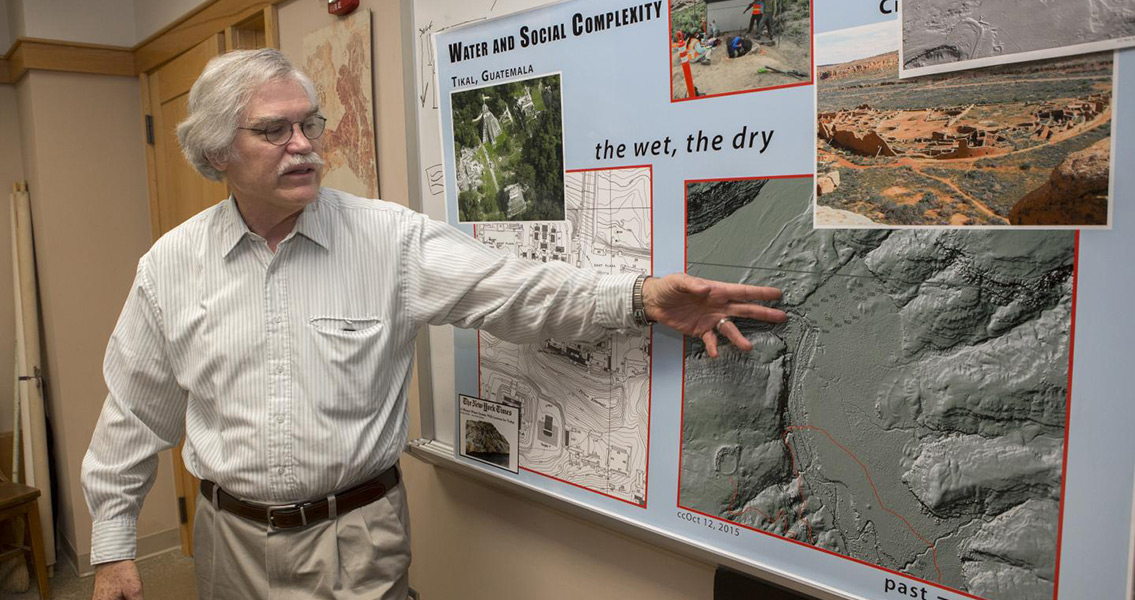<![CDATA[Water is everywhere, covering 71% of the earth's surface, yet this vital resource is becoming increasingly scarce. In a new multidisciplinary project, scientists from the University of Cincinnati are looking through history to gain new ideas for modern water management. As the world's population continues to grow at a relentless rate, fresh water supplies are getting perilously short. Reservoirs and aquifers are drying up, a consequence of overuse, and climate change triggering periods of drought around the planet. A billion people - one in seven of the world's population - currently lack access to clean drinking water. The planet is seemingly heading for a water crisis. As former Canadian prime minister Jean Chrétien said in 2015: “The future political impact of water scarcity may be devastating. Using water the way we have in the past simply will not sustain humanity in future.” Researchers from University of Cincinnati's anthropology, geography and geology departments have been exploring rainforests and deserts around the globe in an attempt to find out how ancient humans changed their environment to manage the water supply. "We begin by asking, 'What is water to humans, how do we engage with it and how does the environment engage us?" explained Vernon Scarborough, professor and department head in UC's Department of Anthropology, in a press release. "When we look at the trajectory of our changing climate, we realize that the issue is not just climate change but also water change. Climate and water work synergistically and can affect one another in critical ways. "Given the current climate patterns, in this and the next century, we will likely face further rising sea levels, less potable water and a compromised availability of freshwater as a result of drought in many areas and unusually heavy rains and runoff in others. "So we are looking at how the past can inform the present," Scarborough added. One area studied intensely by the researchers was Chaco Canyon in New Mexico. For three hundred years this dry desert in what is now the south west of the USA was inhabited by the ancestral Puebloan community. The UC research team used aerial surface imaging technology, mass spectrometry and geochemical soil sampling, as well as anthropological, DNA and soil excavations around ancient structures, to help shed light on how the Native American Puebloans managed water and survived in the desert. "We found geochemical evidence for corn grown in the area during this time, which is a very water-intensive crop, as well as sophisticated irrigation and water-management techniques," said Kenneth Tankersley, UC associate professor of anthropology and geology. Intriguingly, soil analyses revealed that rather than being a problem, the highly salty soil of the region was actually a form of calcium sulphate mineralisation which improved the soil for maize farming. Other tests provided insight into how the Puebloans supplied themselves with water. "The surrounding mesas provided water in their springs after the snow melted," explained Tankersley. "During the rainy season when floodwaters hit, the Puebloans would capture runoff water from small canyons known as the rincons and local periodic streams such as Chaco Wash and Escavada Wash." Researchers in the UC team also explored the Guatemalan rainforests around Tikal, a Maya site that was inhabited around the same time as Chaco Canyon. The team found that the Maya had to overcome periods of severe drought, even though Tikal was a rainforest. "Similar to Chaco Canyon, we found geochemical evidence for corn fields situated in specific environmental niches at Tikal", said Nicholas Dunning, a UC professor of Geography. The team believe that the Maya at Tikal channeled runoff water during their rainy season and created complicated water storage systems. Tragically, it seems the Maya eventually helped bring about their own demise. "Essentially, they may have affected a change in their own climate", said Scarborough. "After several years of deforestation -- clearing out trees and forests to make room for crops -- the Maya unintentionally, but perhaps dramatically upset their annual rainfall, which precipitated degrees of drought that ultimately forced them to abandon the once fertile environment. Sound familiar?" Scarborough and colleagues' main goal was to explore these ancient cultures as a means to inform water management in the future. However, their research also highlighted how the Puebloans and Maya affected their environment and landscape. "If you don't design for that appropriately, you can be building management networks and ways to capture and control water that will wind up getting buried like the build-up behind modern dams, or plans can get abandoned altogether as a river changes," said Jon-Paul McCool, UC doctoral student under Dunning's mentorship. "How past populations dealt with variable precipitation like that identified at Tikal, Chaco Wash or drainage patterns overall has been very dynamic. Such investments in building massive dam projects today is a costly expenditure of money and time that might well benefit from views of the past. "We don't want to waste that money on high-priced water infrastructure if we can engage in smaller scale, lower investment strategies like our ancestors did." Image courtesy of Joseph Fuqua II/UC Creative Services]]>
Maya and Ancestral Puebloans Providing Clues on World Water Crisis
